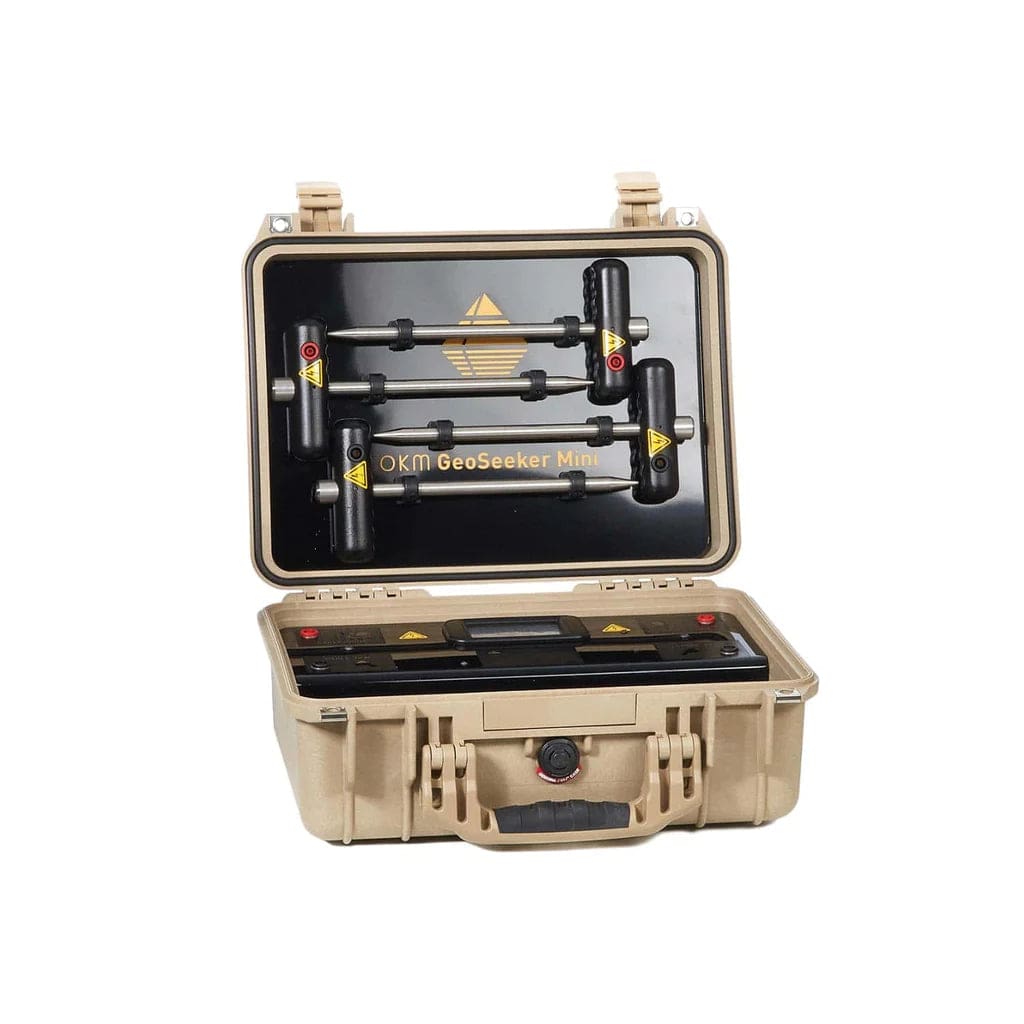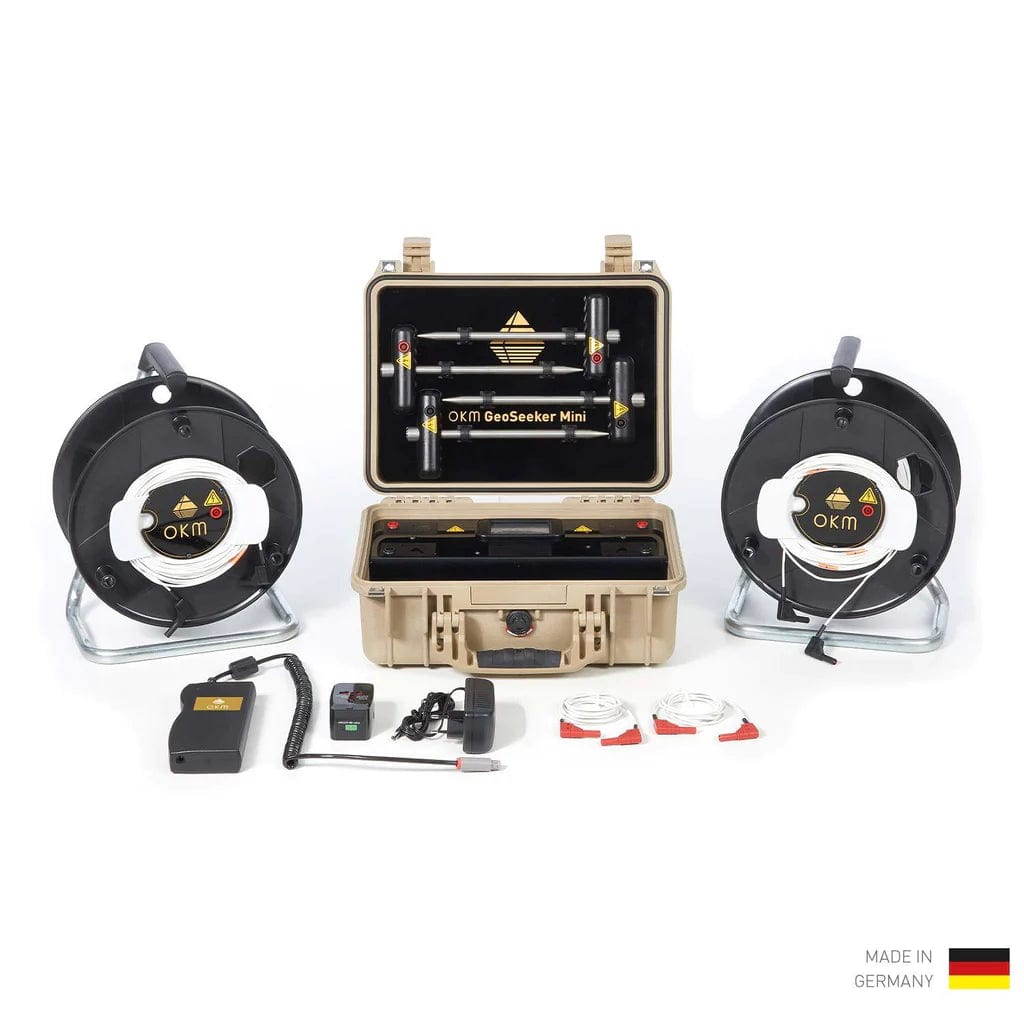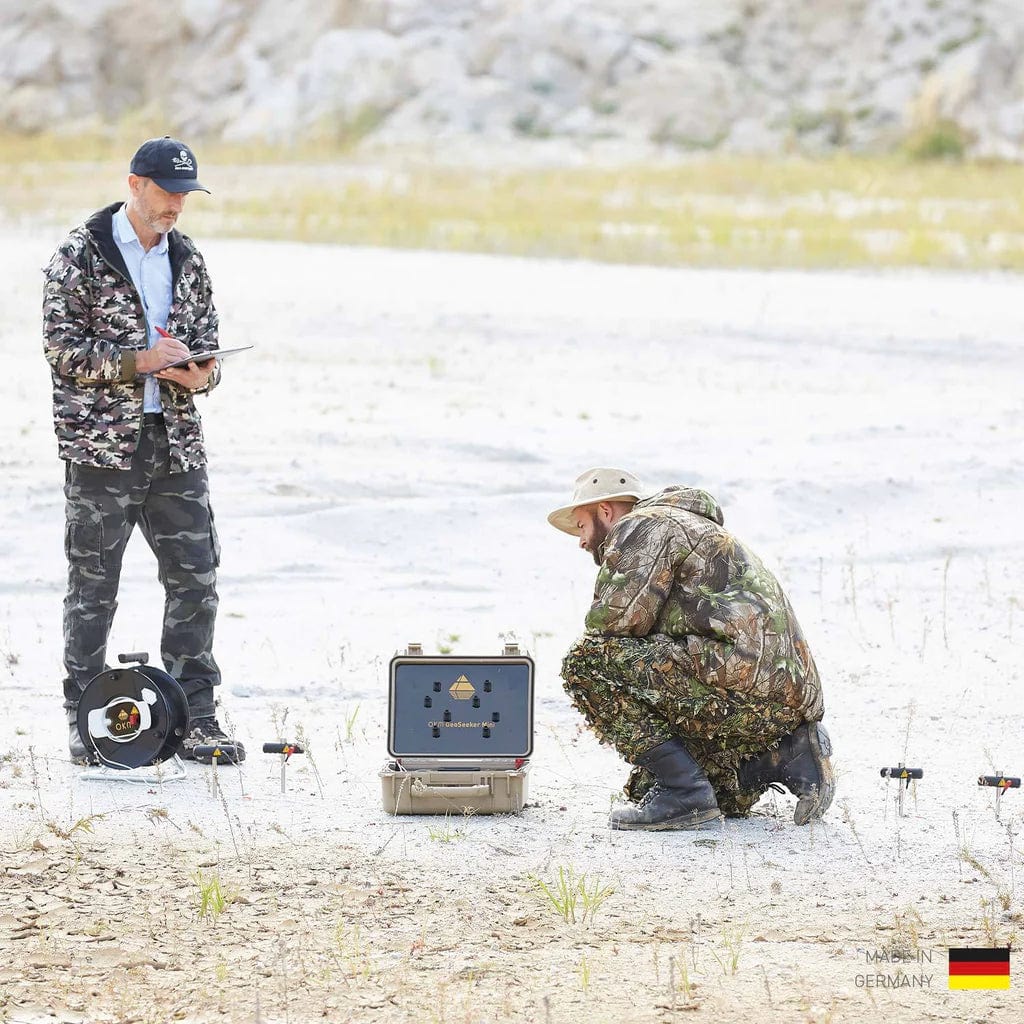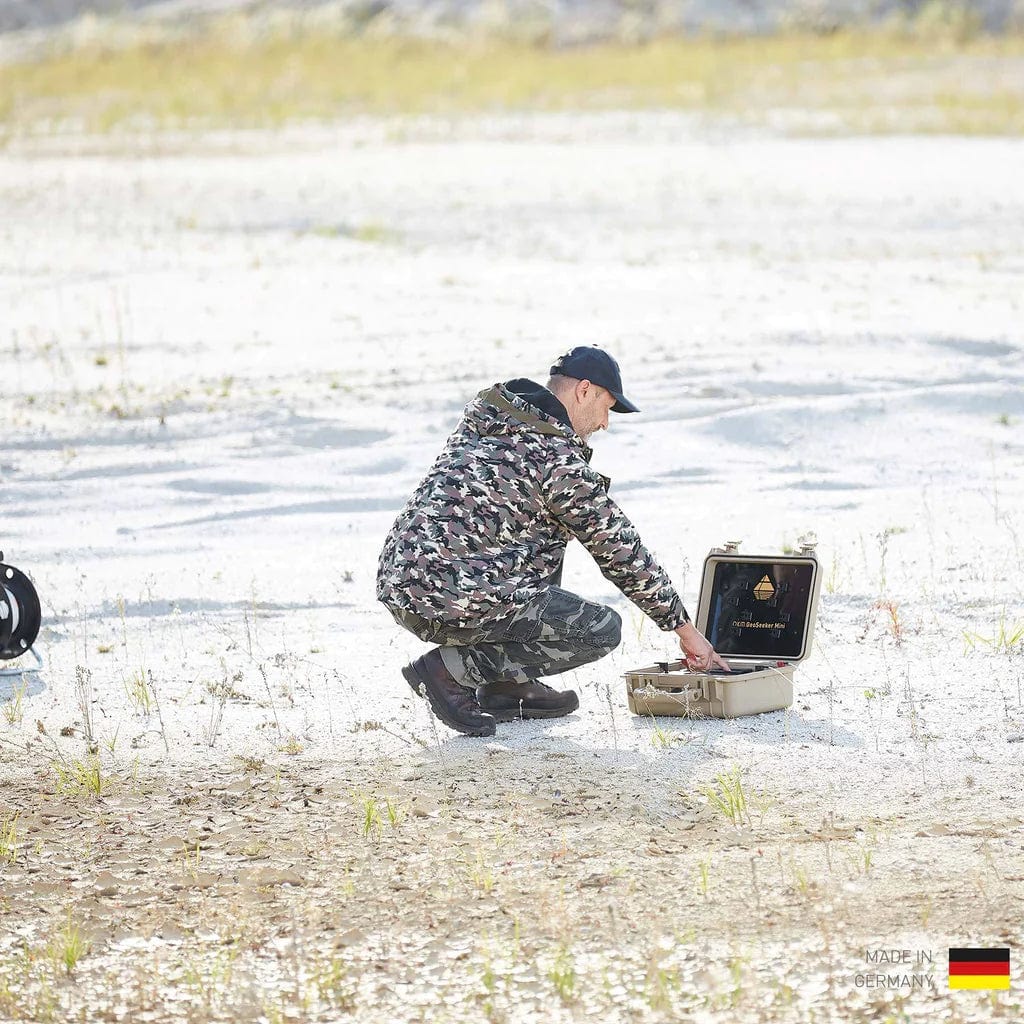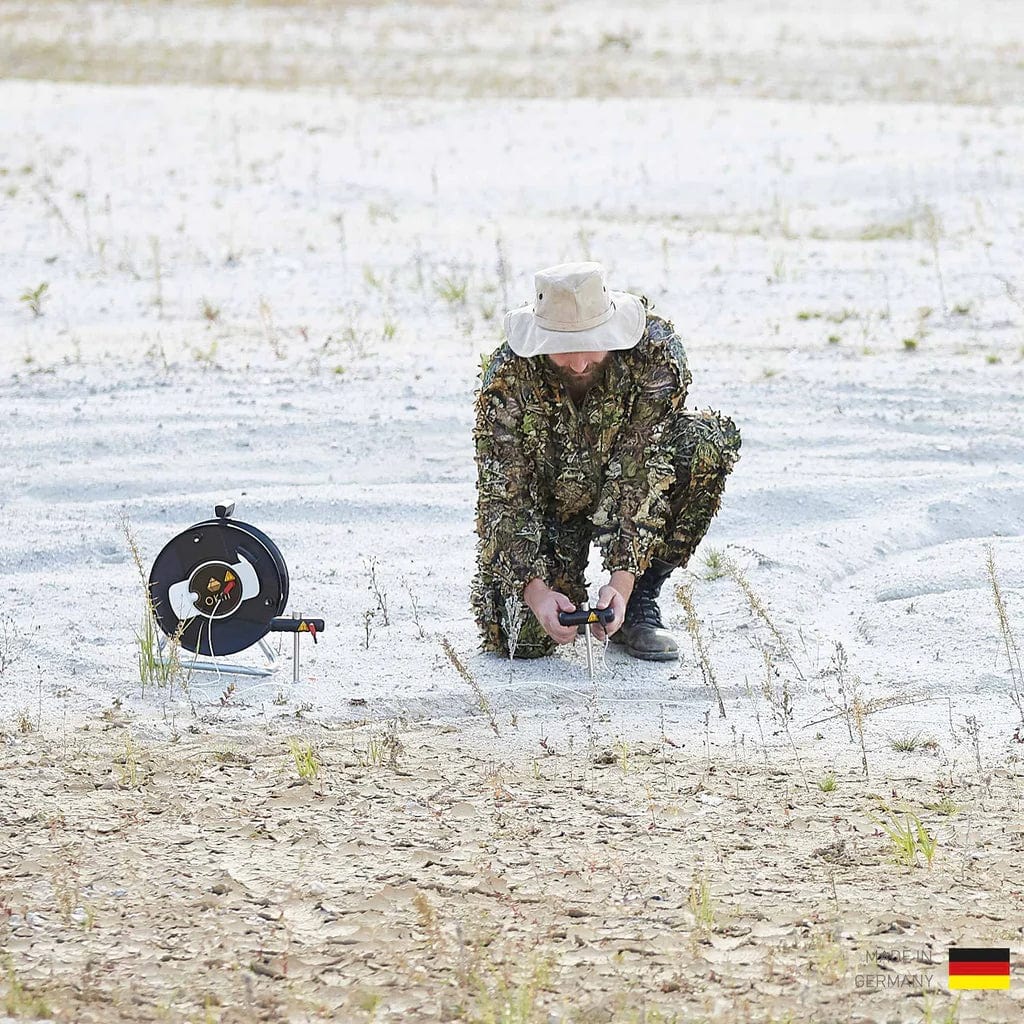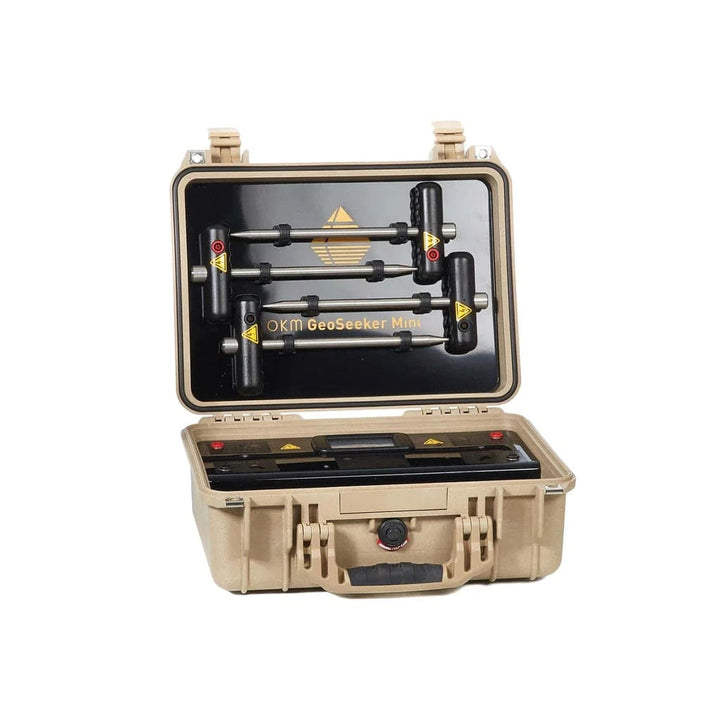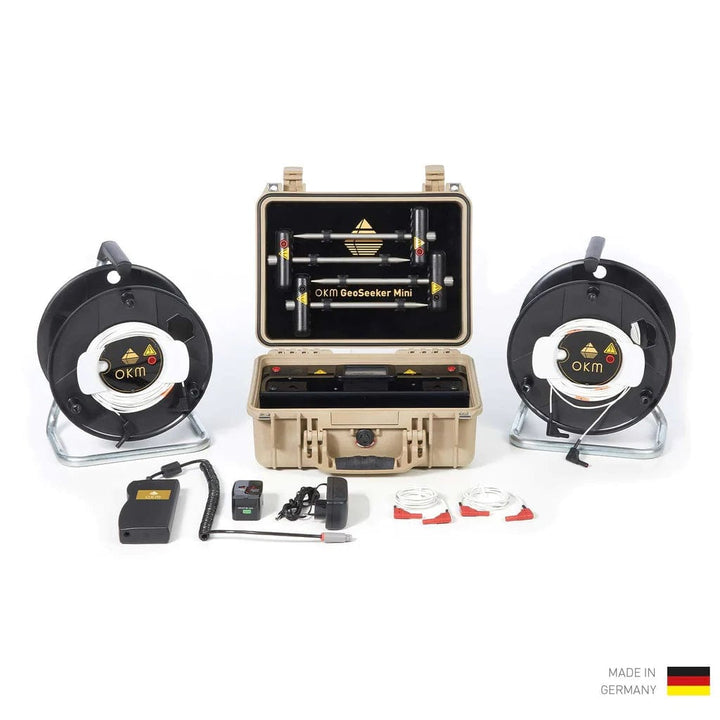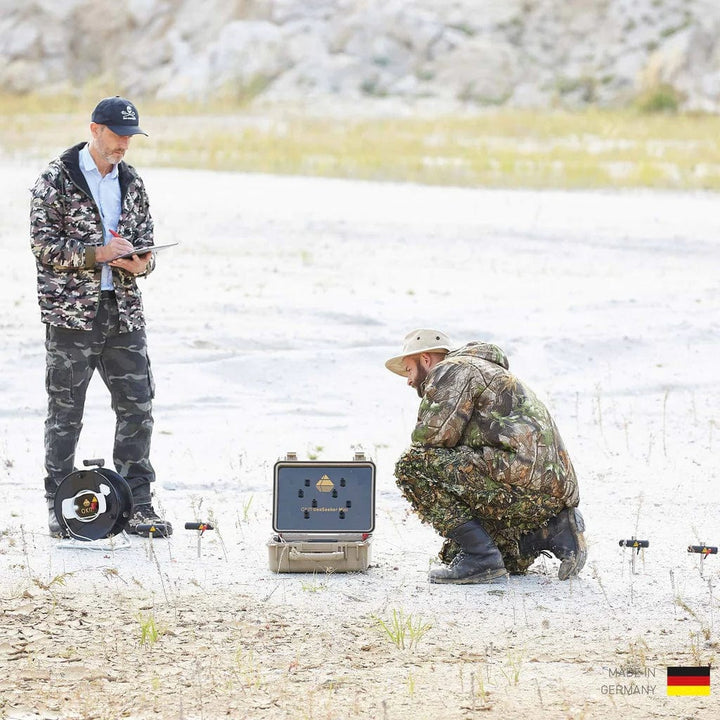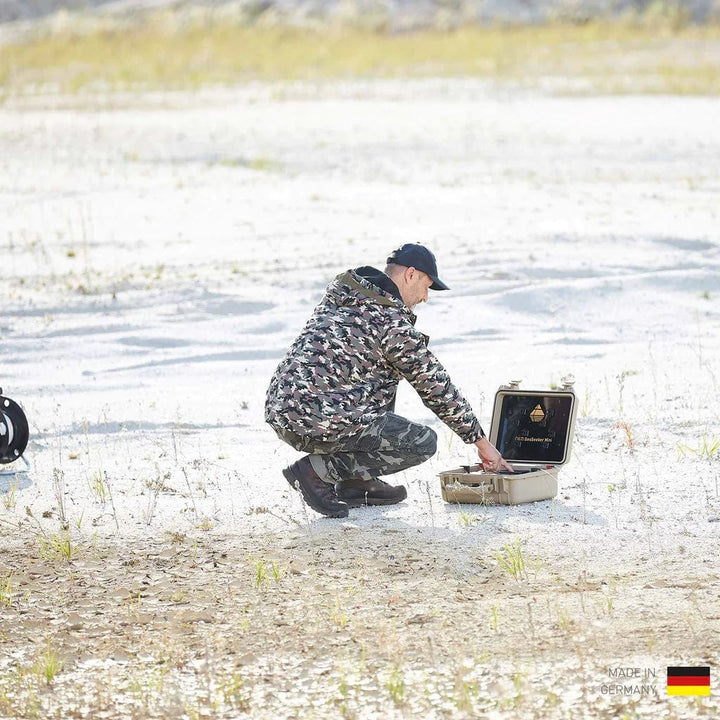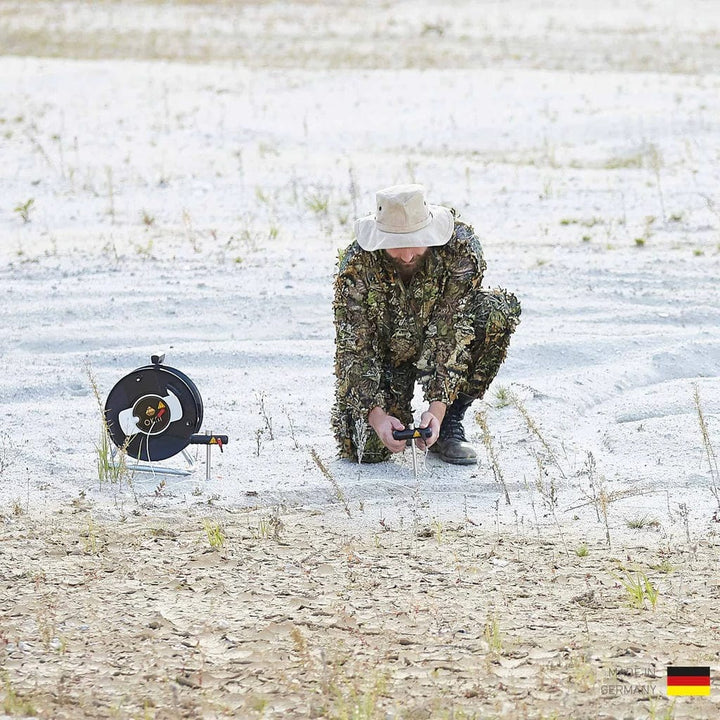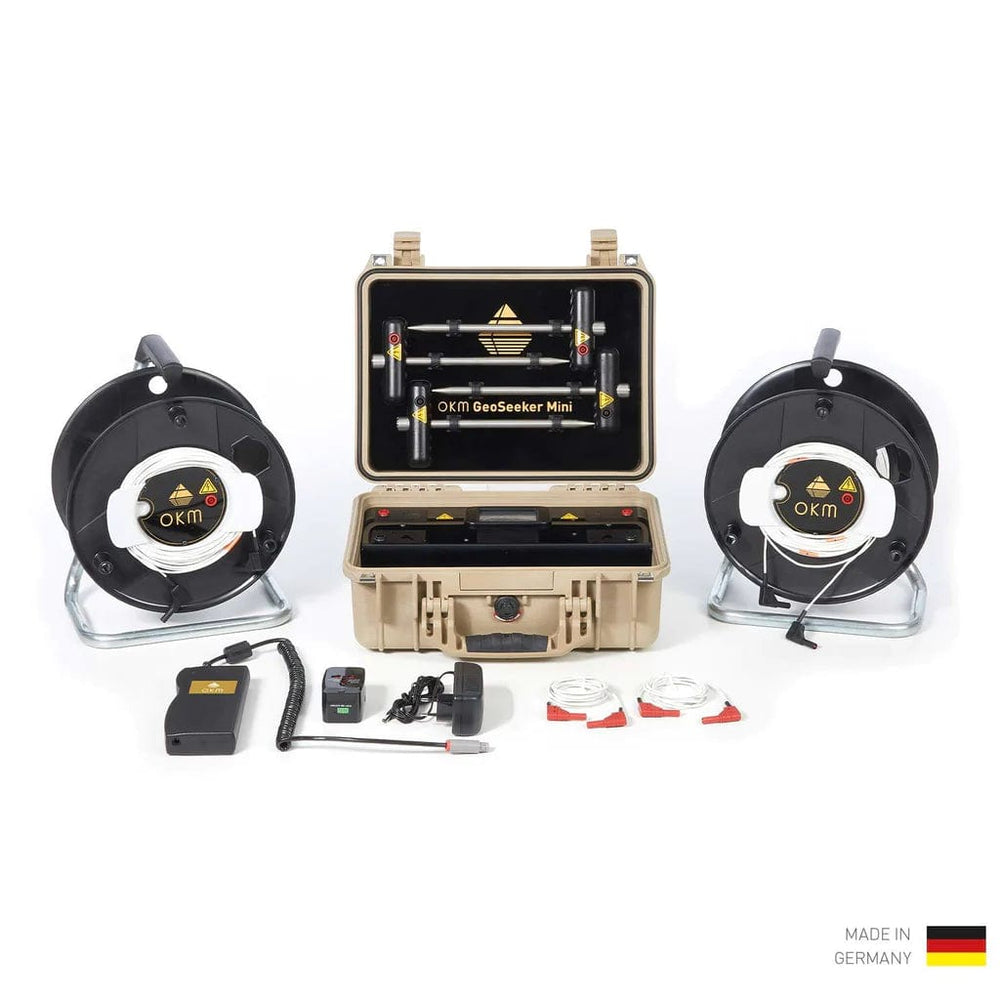- Geoelectric water and cavity detector: Determines the ground resistance down to a depth of 100m and visualizes the measured values in 2D
- Detection depth: With this technology customers found water down to 100 m (328 ft) deep
- Use cases: Water detection, cavity detection, geotechnical engineering
- Operating modes: Geoelectrical scan
- Detectable structures: Water deposits, water-bearing gravel, cavities

Water detector and cavity detector up to 100 meters (328 ft) depth
Like his big brother GeoSeeker, the GeoSeeker Mini utilizes a geoelectrical measurement procedure based on Schlumberger. The water detector – that can also be used to detect underground cavities – determines the soil resistivity. Based on that apparent resistivity of the ground the detector is able to detect underground water resources like fresh water, drinking water, water-bearing gravel and groundwater level.
Operating the water and cavity detector GeoSeeker Mini
The water detector GeoSeeker Mini is operated via touchscreen. Select the measurement depth as well as the amount of scanning points and simply follow the graphical instructions. Due to easy-to-understand images and icons, the GeoSeeker Mini is multilingual by using pure picture language.


During the measurement the electrodes have to be replaced several times to measure the ground resistivity at certain places. All instructions can be read from the color display, where the results are presented after each single scan. At the very end of a measurement the final result is shown as a graphical 2D scan image.
Data visualization of water resources and cavity
After finishing a geoelectrical measurement, the final result is calculated to generate a representative 2D scan image of the underground resistivity. With the pictograms in the lower display area, users can read directly the diagram: The colors in the scheme indicate water deposits (blue with water drops) and/or detected cavities (red with tunnel symbol).


Depending on the selection of the size and depth of the measurement, the display contains several columns and is provided with corresponding depth information.
Using the left button (water drops) and the middle button (tunnel entrance), the user can switch to simplified representations of the measurement results.




Thanks to the realization of step-by-step instructions and results in simple images and pictograms, the GeoSeeker Mini is language-independent. That means, the water detector can be used by inexperienced users all over the world – no matter what language they speak.
Geoelectrical applications with GeoSeeker Mini
The geoelectrical detector OKM GeoSeeker Mini can be used to detect underground water resources as well as hidden cavities. Both structures can be located due to its specific characteristics of electrical resistivity.
Water detection
Underground water resources have a good electrical conductivity and measuring its resistivity will result in low apparent resistivity values. The capability of water detection is very useful for
- dowsers, water finders
- well builders, drilling companies
- agriculture, fruit growing
- mining, building contractors
Detectable subsurface water deposits could be
- ground water level
- fresh water, drinking water
- underground watercourse, water veins
- underground water streams, headwaters
Cavity detection
Hidden cavities and hollow spaces have a rather poor electrical conductivity and measuring its resistivity will result in high apparent resistivity values. The capability of cavity detection is useful for
- archaeologists, historians
- treasure hunters
- geotechnical engineering
- military services
- building contractors
Detectable subsurface cavities could be
- caves, tunnels
- galleries and manholes
- chambers, sepulchers, tombs
- bunkers, vaults, cellars, rooms

Control unit
- Dimensions (H x W x D): 410 x 340 x 180 mm
- Weight: 4.5 kg
- Input voltage (max.): 11 – 13 V DC / 30 W
- Display: 3.5” Resistive touch, 480 x 320 Pixel
- Display CPU: Cortex M3, 32 MHz, 128 KB RAM
- Data memory: 4 GB
- Sample rate: 4096 Hz (64-fold oversampling of 512 values)
- Operating time: approx. 6 – 8 h
- CPU: 80 MHz Cortex M3
- ADC: 16 bit
- Effective Range: (differential) –1400 to +1400 mV
- Measurement Period per Scan Point: min. 16 s
- Output: 320 V / 0.4 A
- Input Resistance (static): approx. 12 MΩ
Power Cable Drums (Ø 290 mm)
- Dimensions (H x W x D): 360 x 290 x 200 mm
- Weight: 3.6 kg
- Cable length: 100 m
- Markers: 10
Electrodes
- Dimensions (H x W x D): 270 x 120 x 35 mm
- Weight: 0.4 kg
Voltage Cable
- Cable length: 10 m
- Markers: 10
| 1x | Control unit with touchscreen |
| 1x | Waterproof and shock resistant Pelican case |
| 1x | Power Pack with charger and travel adapter |
| 2x | Power cable drum (Ø 290 mm) |
| 2x | Voltage cable (10 m) |
| 4x | Electrode |
| 2x | Connecting Cable (2 m) |
| 1x | User’s manual |
Treasure Coast Metal Detectors Disclaimer
Treasure Coast Metal Detectors is not responsible for returns due to incorrect handling of the equipment sold. We also cannot guarantee the discovery of valuable treasures or metals if there is nothing to be found in the search area. Treasure Coast metal Detectors guarantees that the devices detect efficiently as they are constantly evaluated by detectorists and manufacturers to provide the best results. However, we suggest that our customers carefully analyze the equipment before making any purchase, as they are high-end and very modern devices that cannot be returned.
Furthermore
- The buyer is responsible for all import duties, taxes, and charges.
- The buyer should check with their country's customs office to determine the exact amount of these charges.
- Treasure Coast Metal Detectors is not responsible for returns due to incorrect handling of the equipment.
- Treasure Coast Metal Detectors cannot guarantee the discovery of valuable treasures or metals.
- Treasure Coast Metal Detectors guarantees that the devices detect efficiently.
- Treasure Coast Metal Detectors suggests that customers carefully analyze the equipment before making any purchase.



